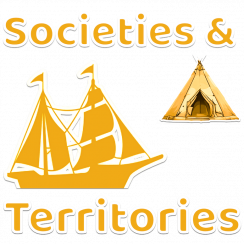Originally, the Mi’kmaq lived by hunting and fishing. At the end of the 18th century, there was greater colonization of their territories. The Mi’kmaq gradually became sedentary and turned to other activities, such logging and creating handicrafts for their livelihood.
The Mi’kmaq still fished and hunted for themselves. However, their main economic sectors were forestry, construction, handicrafts and fishing. Tourism was a promising field because every year more and more people were visiting the Gaspé.
The Mi’kmaq worked for band councils or in small shops. Others were forest workers or guides for hunters and fishermen. The Maria cooperative sold works created by the Mi’kmaq artisans (moccasins, leather clothing, baskets) in Canada, the U.S. and even Europe
Economic development
In spite of their efforts, the Mi’kmaq still had economic difficulties. Since there were very few jobs in the villages, many Mi’kmaq had to leave the villages to find work, and often, these seasonal jobs did not pay well.
To ensure the economic development of their region, the Mi’kmaq claimed the right to participate in the management of the fisheries and the forests on their former territory. They established partnerships with non-Indigenous neighboring communities to help manage the natural resources.
Author: Service national du Récit de l’univers social




